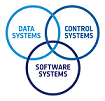The hot redundant ADPMS3 OBC (used in our IBDM) is currently in its qualification campaign under the direct supervision of ESA in the frame of the IBDM project, and is currently atTRL7. The cool redundant version of OBC, along with the other ADPMS3 PCDU and RTU products, are due to complete the qualification campaign under the supervision of ESA, later this year.
Use of vision-based AI in critical embedded systems
Artificial Intelligence methods such as Deep Neural Networks are able to provide performances that surpass those of more classical techniques. The potential improvements do not come for free, as the problematique with these techniques lies in the explainability of their results. For this reason, introducing them into critical embedded...
With the advantages and appealing performances of artificial Intelligence (AI) in different applications, space scientists and engineers have shown great interest in AI-based solutions to space scenarios. However, different from terrain applications, the decision of the space vehicles offered are critical and should be trustable in the uncontrolled and risky environment, resulting in the most...
Today AI cannot be verified and validated for critical applications as the ECSS requirements on software quality are not adapted to be applied for learning systems but for deterministic control algorithms. Likewise, there are a multitude of potential use-cases for AI within the space domain, e.g. health monitoring, AOCS, VBN, image processing and more, but the qualification of such...
As spacecraft missions continue to increase in complexity, both system operations and amount of gathered data demand more complex systems than ever before. Currently, mission capabilities are constrained by on-board processing capacity, depending on a high number of commands and complex ground station systems to allow spacecraft operations. Thus, computing capacity and increased autonomous...
In the context of Space Situational Awareness (SSA), on-board detection of space weather events – such as solar flares or Coronal Mass Ejections (CME) – can decrease the system latency for critical information reaching the end-users. Unfortunately, such detection requires complex on-board image analysis not commonly deployed on institutional missions, due to lack of high-performance space...
The Wild Ride satellite mission currently in orbit has demonstrated the ability to orchestrate a set of 23 “applications” from a variety of partners, including “WorldFloods”, an ML payload developed by the Frontier Development Lab (FDL), a partnership led by UK-based
Trillium Technologies with the University of Oxford and ESA’s Phi-lab.
This presentation will cover 3rd party application...

